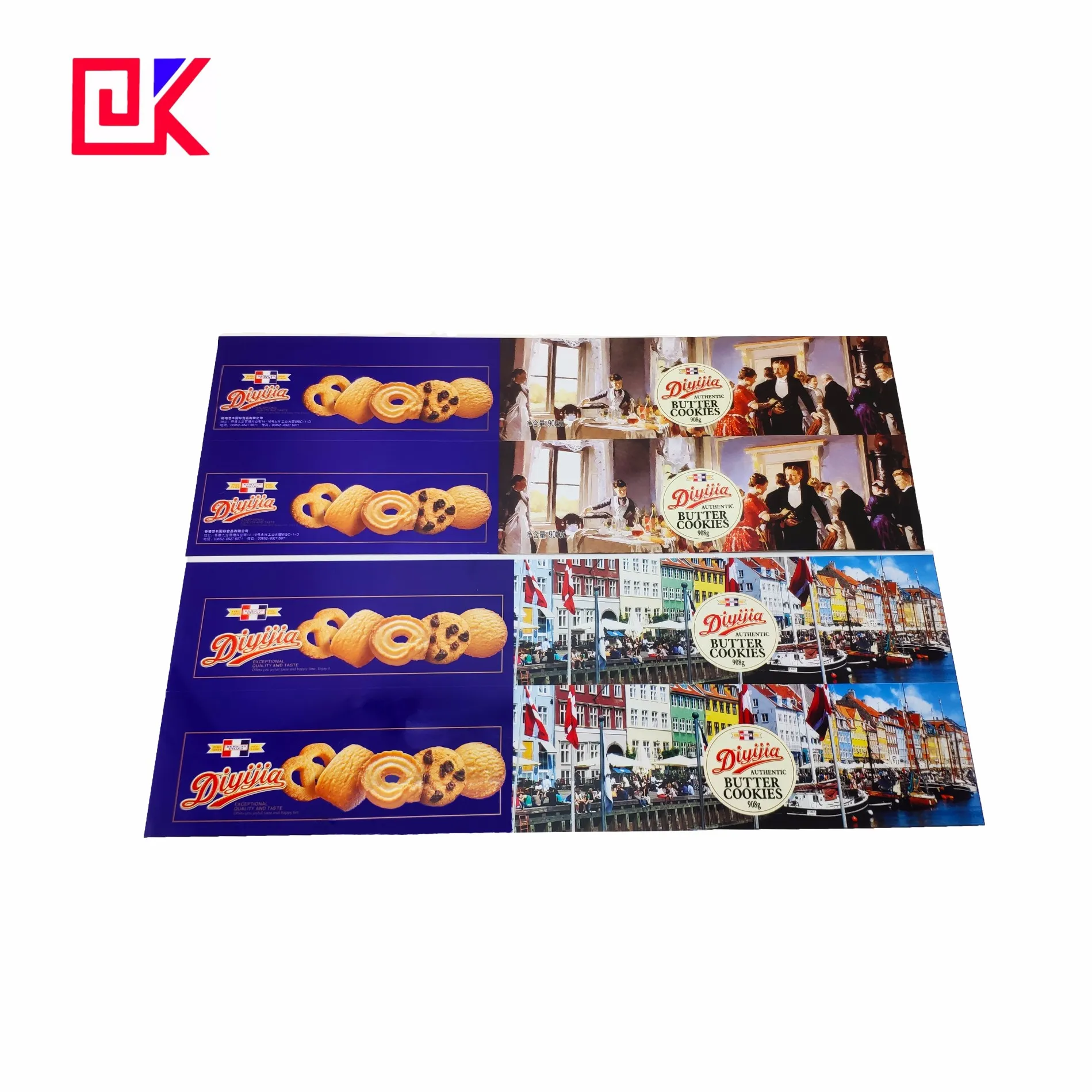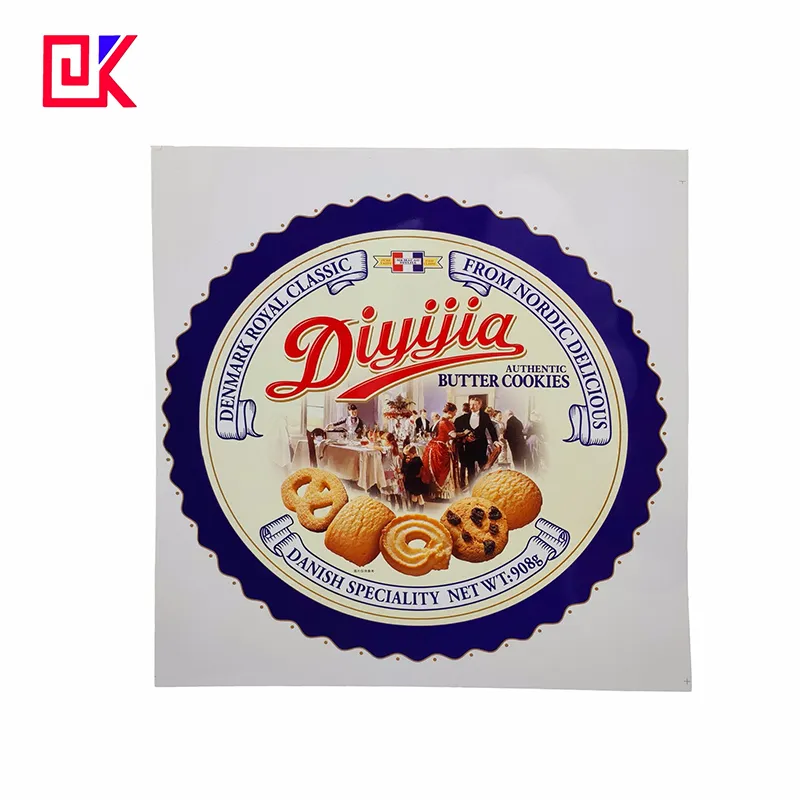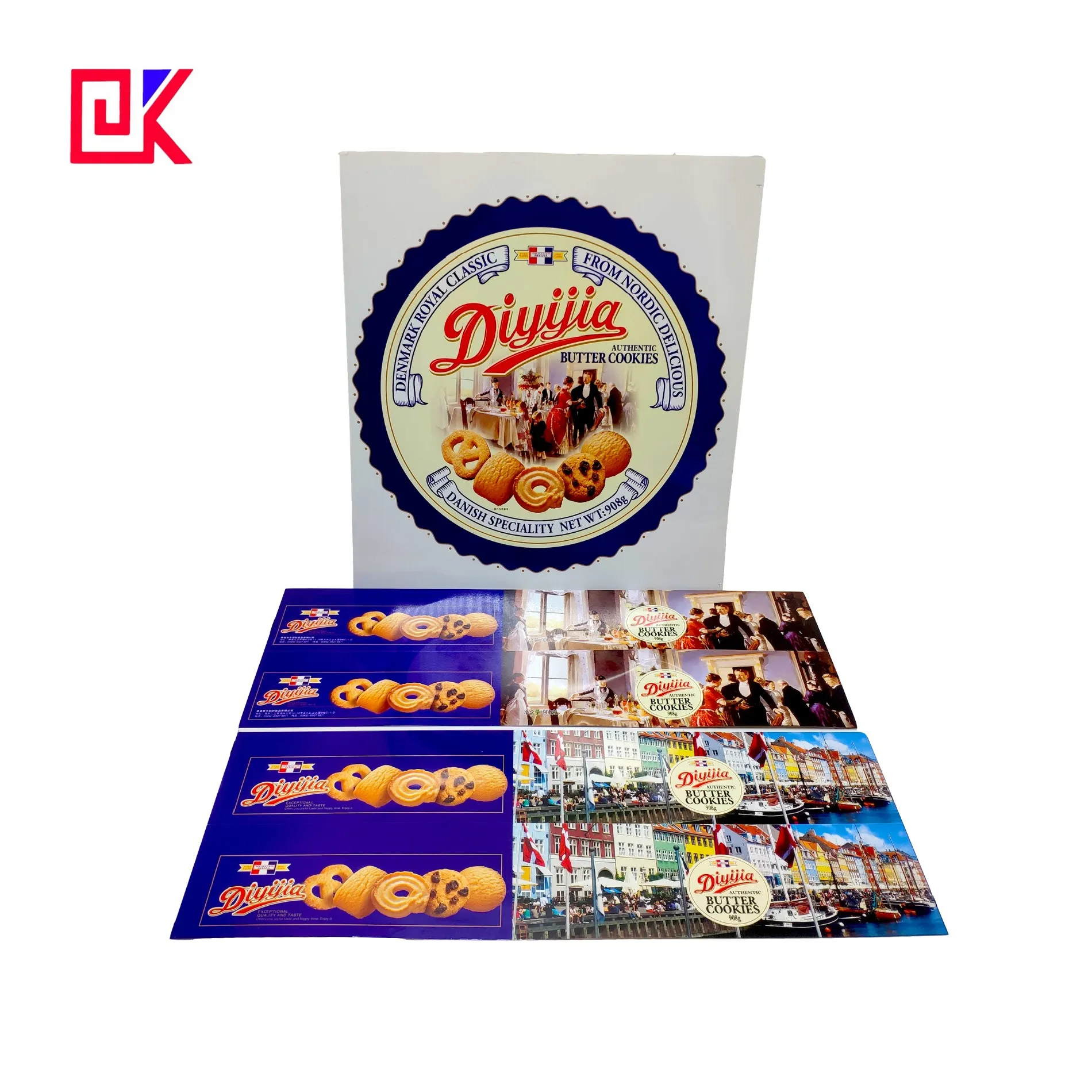The patterns on food packaging cans are not only decorations to attract consumers, but also an important carrier for conveying brand image, product information and food safety. Whether it is colorful beverage cans, exquisite candy boxes, or elegant biscuit packaging cans, the patterns printed on the surface of the cans add visual appeal to the products.
So, how are these patterns on food packaging cans printed? What key technologies are involved in the printing process? This article will answer this question in detail from the aspects of printing process, material selection, operation process and quality control.

What is the concept of pattern printing on food packaging cans?
Food packaging cans are mostly made of metal materials, and the most common ones are tinplate and aluminum cans. Tinplate cans are widely used in food packaging because of their excellent anti-corrosion properties and mechanical strength. Due to its smooth surface and the characteristics of not easy to absorb ink, special processes and technologies are required in the printing process so that the pattern can be firmly attached to the surface of the metal can and maintain long-term color and clarity.
Printing technology is a process of transferring pre-designed patterns and texts to the metal surface by mechanical or chemical means. Since food packaging cans usually undergo long-term storage and transportation, their printing requirements are not only limited to the appearance level, but also need to have special properties such as wear resistance and corrosion resistance. Therefore, the pattern printing of food packaging cans has unique technical requirements.
What are the processes for pattern printing of food packaging cans?
The printing process of food packaging cans is not simple. It combines modern printing technology with metal processing technology. According to different product requirements and printing effects, the processes currently commonly used for pattern printing of metal packaging cans mainly include offset printing (lithography), screen printing and pad printing.
Offset printing (lithography)
Offset printing is the most commonly used process in food packaging can printing. It is an indirect printing method. The pattern is not printed directly on the metal surface, but is transferred to materials such as tinplate through a rubber blanket. The offset printing process has become the mainstream of metal packaging printing because of its fast printing speed, delicate color performance, and ability to carry out large-scale production.
The basic principle of offset printing is "oil and water are incompatible." During the printing process, the part of the plate coated with oily ink absorbs the ink, while the part without ink repels the ink through water, thus forming a clear pattern. This technology enables multi-color printing and is suitable for food packaging cans that require high-precision patterns and color transition effects.
Specific process of offset printing:
● Plate making: First, a printing plate is made according to the design pattern. This is the process of converting a digital pattern into a physical plate, usually using metal or photosensitive materials for plate making.
● Inking: The plate applies oily ink to the pattern area through an ink roller. The non-pattern area remains clean and does not get ink.
● Transfer: The ink on the plate is transferred to the surface of the metal can through a rubber blanket. The elasticity of the rubber blanket helps the ink to adhere evenly to the metal surface and ensures that the pattern is complete and clear.
● Drying: Since the metal surface is not as ink-absorbent as paper, the pattern needs to be dried at high temperature after transfer to make the ink firmly adhere to the metal surface.
The advantage of offset printing is that it can achieve a delicate color gradient effect, which is suitable for food packaging can products that require fine patterns or complex designs. However, the offset printing process has high requirements for printing equipment and operators, and strict color calibration is required before printing to ensure that the final pattern is consistent with the design draft.
Screen printing
Screen printing is another process commonly used for pattern printing on food packaging cans, especially for packaging that requires a thick ink layer, single-color or two-color patterns. Unlike offset printing, screen printing uses a screen to print ink directly onto the surface of a metal can. Its principle is to control the amount of ink passing through the mesh of the screen to form different patterns.
Specific process of screen printing:
● Screen making: First, make a screen with a pattern shape. The screen is usually a screen material stretched on a metal frame, with open mesh holes in the pattern area and blocked mesh holes in the non-pattern area.
● Ink scraping: When printing, the screen is placed on the surface of the metal can, and the ink is evenly scraped on the screen by a scraper, so that the ink is printed on the surface of the can through the open mesh holes.
● Drying: Similar to offset printing, screen printing also needs to be dried after completion to ensure that the ink is firmly attached to the metal surface.
Screen printing is suitable for printing projects that require a high ink layer thickness. Its printed pattern has a strong three-dimensional sense, bright colors and high coverage, and is particularly suitable for use in large-area patterns or monochrome designs. However, since a separate screen needs to be made for each color, screen printing is not suitable for printing multi-color complex patterns.
Pad printing
Pad printing is a highly flexible printing process that is suitable for special-shaped metal cans or food packaging cans with irregular surfaces. Unlike offset printing and screen printing, pad printing is to "transfer" the pattern to the surface of the metal can through a printing plate made of silicone or other flexible materials.
Specific process of pad printing:
● Plate making: First, make a pattern on a flexible silicone printing plate. Due to the softness of silicone, pad printing can adapt to packaging cans with complex curved surfaces.
● Inking: The ink is applied to the silicone printing plate, and then the printing plate is pressed against the surface of the metal can to transfer the ink to the can body.
● Curing: After the transfer is completed, the ink needs to be dried or cured to ensure that the pattern is firmly attached.
The advantage of the pad printing process is that it can print irregularly shaped metal cans, which is suitable for some specially designed packaging products. But its disadvantage is that the printing accuracy is relatively low, which is suitable for simple patterns or texts, but not for complex color gradients and delicate pattern designs.

What materials are used for food packaging can printing?
In the process of printing patterns on food packaging cans, the materials used are also crucial, mainly including printing inks, coatings and substrates. These materials not only affect the clarity and color performance of the pattern, but also directly related to the safety of food packaging.
Printing ink
The printing ink of food packaging cans is different from ordinary printing inks and must meet the safety standards of food contact materials. Printing inks must have the following characteristics:
● High temperature resistance: Since food packaging cans need to be dried or sterilized at high temperatures during the production process, printing inks must be resistant to high temperatures to avoid discoloration or falling off at high temperatures.
● Wear resistance: Food packaging cans will experience frequent collisions and frictions during transportation and sales, and printing inks need to have good wear resistance to ensure that the pattern remains clear for a long time.
● Non-toxicity: Food packaging is in direct contact with food, and printing inks must be non-toxic and harmless, and will not release harmful substances to contaminate food.
Common food packaging can printing inks include solvent-based inks, water-based inks, and UV-curable inks. Different types of inks have different application scenarios and advantages and disadvantages. For example, solvent-based inks have excellent adhesion and durability, while water-based inks are more environmentally friendly.
Primer and topcoat
In order to enhance the adhesion of the pattern and improve the printing effect, metal cans are usually primed before printing. Primer is a transparent or translucent coating that can improve the smoothness of the metal surface, enhance the adsorption of ink, and prevent the pattern from fading or falling off.
After the pattern is printed, the food packaging can will also be topcoated. Topcoat can not only enhance the wear resistance and corrosion resistance of the can body, but also improve the gloss and decorative effect of the packaging can. Common topcoat materials include epoxy resin, acrylic, etc. The choice of topcoat material depends on the purpose and design requirements of the packaging can.
What is the operating process of pattern printing on food packaging cans?
Pattern printing on food packaging cans is a precise and systematic process, which usually includes the following main steps:
1. Pattern design and plate making
2. Metal surface treatment
3. Printing and drying
4. Topcoating and packaging
Pattern design and plate making
The first step in printing is to design the pattern according to brand needs and product positioning. Designers will create suitable patterns and color combinations based on the shape, size and material of the can body, and hand over the design draft to the plate making department. Plate making is the core link of printing, and accurate printing plates can ensure that the final pattern is consistent with the design draft.
Metal surface treatment
Before formal printing, the surface of the food packaging can needs to be pre-treated, including cleaning, primer and other steps. The purpose of cleaning is to remove oil and impurities on the surface of the food packaging can to ensure that the ink can adhere evenly, while the primer provides a better adhesion basis for subsequent pattern printing.
Printing and Drying
Depending on the printing process selected, the pattern is transferred to the surface of the metal can by offset printing, screen printing or pad printing. Each color may need to be printed separately, especially for multi-color patterns, where each layer of color needs to be printed in sequence. After printing, the metal can enters the drying process, where the ink is cured at high temperature to ensure that the pattern is firmly attached.
Topcoating and Packaging
After printing, the surface of the metal can is topcoated to improve the durability and aesthetics of the packaging. Finally, the finished can undergoes a strict quality inspection to ensure that the printed pattern is flawless and the color is accurate, and then it is packaged and shipped.

How to control printing quality?
The printing quality of food packaging cans directly affects the market competitiveness of the product, so strict quality control must be carried out during the production process. Printing quality mainly includes color reproduction, pattern clarity, accuracy of printing position, and printing durability.
The production line is usually equipped with advanced automatic detection equipment to monitor various parameters during the printing process in real time. Through these testing methods, we can ensure that each batch of food packaging cans shipped out of the factory meets the established quality standards, not only perfectly presenting the design effect in appearance, but also maintaining long-term durability during transportation and storage.

